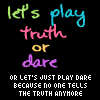A Guide to Teaching and Learning Methods
GRAHAM GIBBS (1988)
Preface
The guide has itself been developed through experiential methods. Many of the methods described have been tried out in action research projects in a wide range of contexts. The members of the project team used experiential learning theory to plan experiential learning sessions, carried out these teaching and training sessions and then held debriefings in which they reflected on their experiences in these sessions. More formal evaluation of methods has also been undertaken, using interviews and questionnaires. We have been lucky enough to be allowed to see how others use experiential learning methods on their courses and experienced teachers have given us detailed descriptions of their methods. We believe that the guide offers a cornucopia of ideas for implementing experiential learning and we are confident that you will find things which you can try out in your own teaching and training.
We would like to thank the following people for their help, co-operation and ideas in the preparation of this guide:
John Alexander, John Covell, John Cowan, Trevor Habeshaw, David Jaques, Tony Kelly, Paula McGee.
The "Learning Through Doing" Project team:
Bob Farmer
Diana Eastcott
Graham Gibbs
Foreword
The relationship between theory and its practical applications has been at the top of the education and training agenda for a decade or so. Traditionally, teachers have seen it as their job to teach learners how to apply theory, which they may well have learned in a very different context, either on the job, or in some practically contrived context which simulates aspects of the real world experience.
However, as this manual suggests, this may be to put the cart before the horse, since many, if not most, learners seem to benefit from being able to draw on their experience through opportunities for reflection and concept development, and to reapply to new experience what has become a much clearer understanding based on competence of which they can truly claim ownership. The suggestion is therefore that learners ought to be using practice in order to develop and test theory and not the other way round.
It is further suggested that most learners have a wealth of experience to draw on, which, however much lip-service is paid to it, tends to get sadly neglected even in the most carefully designed learning programmes. This is of course particularly true of adult learning programmes of all kinds, including staff development.
In the light of the current debate about the acquisition of competence in the workplace, this manual raises afresh some interesting questions about the merits of real versus simulated experience, and about the role of further education and training in the process of developing learners. It suggests a multitude of ways in which open-minded teachers can try out for themselves the merits of the experiential approach. It allows newcomers to the field to dip their big toes gently in the water, without feeling that a total conversion process is all that will achieve results. It allows teachers accustomed to a classroom and workshop context an opportunity to extend their practice little by little, so that they may begin to approach the perhaps new role of workplace tutor and assessor with confidence. It also offers some insight into the evaluation of such learning and testing processes, a topic likely to occupy educationalists considerably in the next few years.
The manual is likely to be of particular interest to staff developers and tutors in further education and training .
FEU will be interested to receive feedback from any colleges which decide to trial-test the contents.
It remains to express our thanks to the Birmingham Polytechnic EDU team who developed the manual with the able support of Graham Gibbs, whose capacity for creative thinking contributed substantially to the finished result.
1 Introduction
WHY USE THIS GUIDE ?
Most teachers and trainers seem to believe that you learn best by doing. But how is this rather general belief to be put into practice? In particular:
What ideas or theories are there to help us to explain and justify the belief that we learn best by doing?
Does everyone learn by doing in the same way or to the same extent?
What teaching and learning methods are there for us to use which involve learning by doing?
If our courses are redesigned to involve more learning by doing, what might they look like?
How is it possible to change our teaching to involve learning by doing when we are surrounded by constraints?
What can go wrong?
How can we encourage our colleagues to change their teaching to involve more learning by doing?
This guide addresses these questions in a direct way with straightforward explanations and concrete examples. Its emphasis is on practical teaching and learning methods for implementing learning by doing.
'Learning by doing', and the term 'experiential learning', are commonly used to refer to several different aspects of learning. This guide is not concerned with the assessment of 'prior learning': learning experiences which have taken place before learners enrol on courses and which are taken into account in the assessment of the course or the granting of exemptions from course components. Neither is this guide directly concerned with experiential learning in terms of personal development and the human potential and growth movements. Although aspects of personal development, such as the growth of autonomy, are important to learning by doing, it is a massive and separate topic and deserves its own separate guide.
HOW TO USE THE GUIDE
The guide is written to be used as a resource rather than as a book to be read right through. Sections 4 and 5 are full of practical ideas for teaching methods and course designs and are meant to be dipped into. Sections 2 and 3 provide the underlying ideas and Section 6 provides follow-up information if you wish to apply the ideas.
Section 2 provides an explanation of experiential learning theory and the experiential learning cycle. It offers a way of structuring and sequencing learning to improve the effectiveness of learning from experience.
Section 3 describes the ways in which individuals differ in their preferred learning styles and in the way they handle their experiences. It explains some of the implications of experiential learning styles.
Section 4 describes a wide range of teaching and learning methods which implement each of the stages of experiential learning and which take learners round the experiential learning cycle.
Section 5 contains case studies of the use of experiential learning theory in course design and of the way experiential learning sessions are run. If you take experiential learning seriously, this is what your teaching may come to look like.
Section 6 contains exercises and materials to support staff development workshops designed to introduce teachers and trainers to experiential learning. It summarises the main assumptions underlying the adoption of experiential learning methods and lists the more common problems encountered in introducing experiential learning methods.
IS THIS GUIDE ENOUGH?
No it isn't! Inevitably the descriptions of teaching methods are brief and lack subtlety: sources are suggested for further reading. But reading on its own is not enough. Section 6 offers workshops for introducing experiential learning methods to teaching staff experientially rather than through passive reading alone. But it is not until methods are tried out and teachers gain first hand experience of their use that their full value can be appreciated. To learn about experiential methods you have to use them and experience them, reflect on their use and experiment again. Ideally this should be done co-operatively so that teaching experiences can be discussed. Probably the ideal use of the guide would be on an in-service teacher training course where those on the course tried selected methods out in their teaching and then discussed what happened.
more: at http://www2.glos.ac.uk/gdn/gibbs/index.htm
Thursday, June 14, 2007
Learning by Doing
Subscribe to:
Post Comments (Atom)






0 comments:
Post a Comment